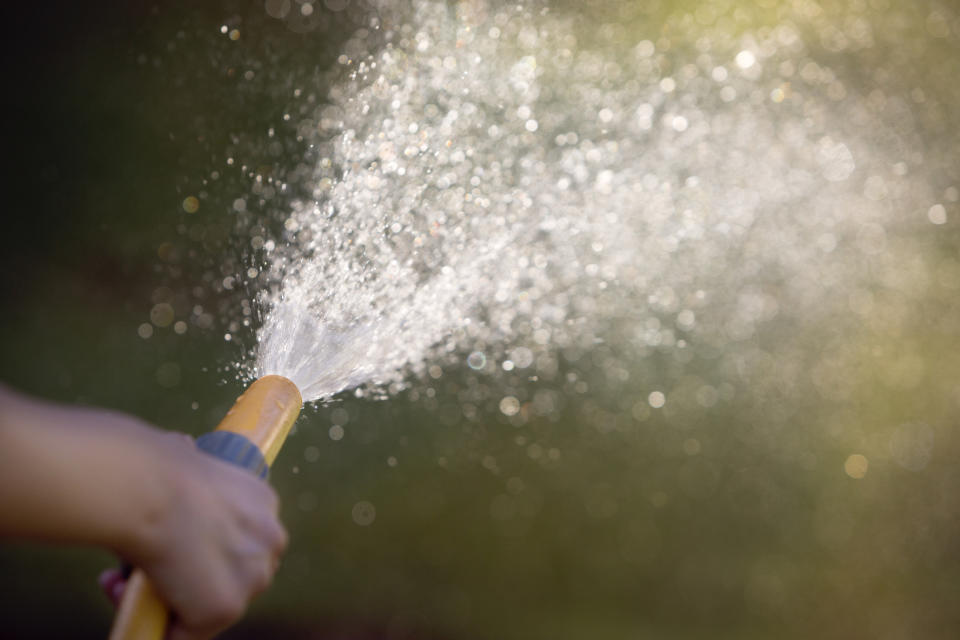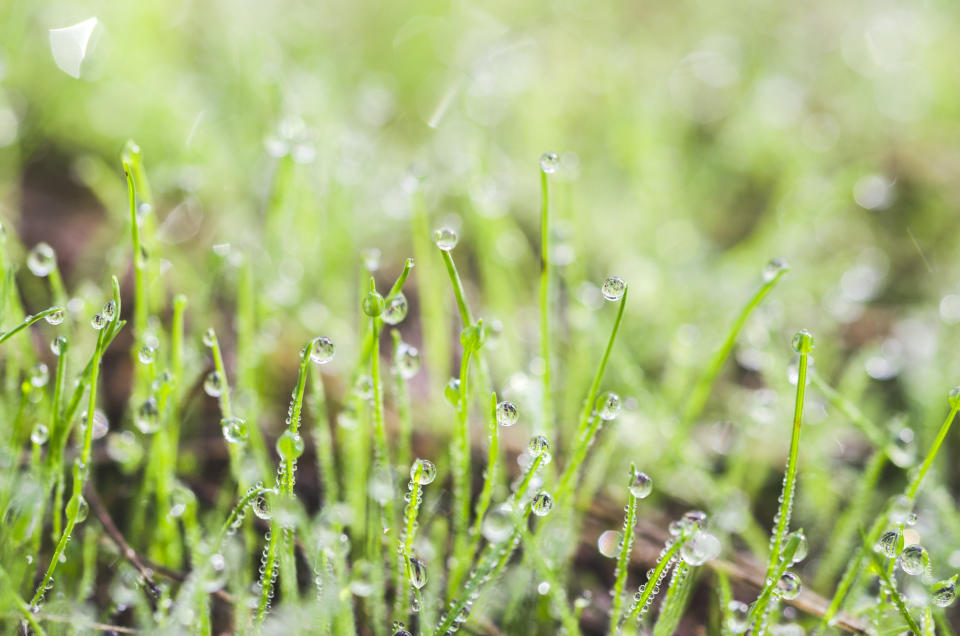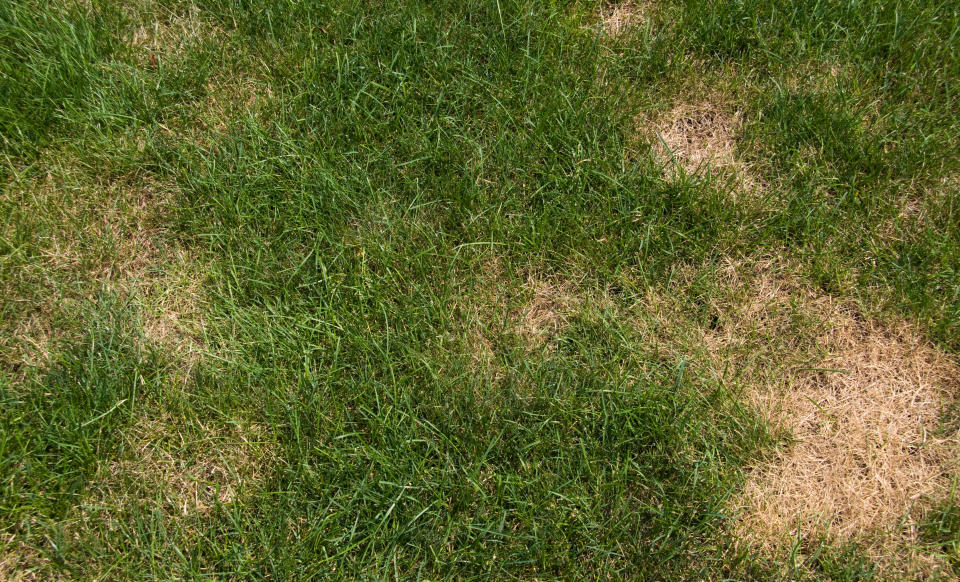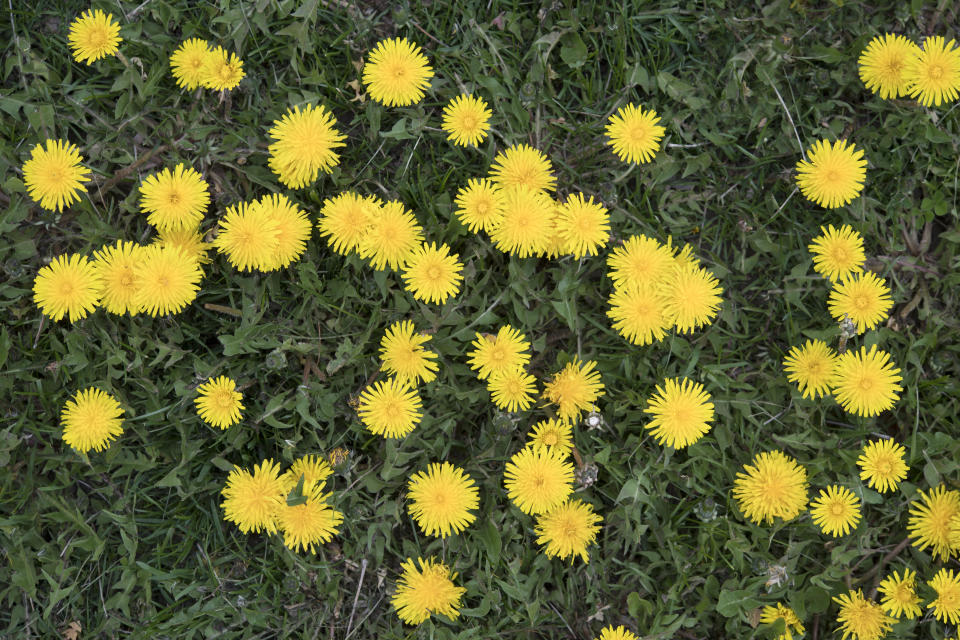Lawn Maintenance Tips and Tricks From A Pro
With more time spent at home, now is the perfect time to seize the everyday and tackle tasks around the home that you may not have had the time to in the past. From D.I.Y. fence and patio repair tips to how to create your own backyard oasis for your family, Canadian Tire and Yahoo Canada are proud to help Canadians get there by bringing you everything you need for the season.

A healthy lawn can be a source of pride, or a sore spot for homeowners. From the summer’s heat to pets and pesky weeds, there are plenty of factors that can turn the lush, thick lawn of your dreams into a nightmare.
The good news is that with the right tools, you can turn your lawn into a masterpiece. While it may seem costly and time consuming, simple and cost-effective changes now can actually make a big impact for months to come. And with more time spent at home, it’s a great time to take on some lawncare projects that will turn your outdoor space into the perfect setting for every summer activity.
Alan Pinsonneault, president of the Professional Lawn Care Association of Ontario is an expert when it comes to turf. The owner of Al’s Lawn and Garden in Chatham, Ont spoke with Yahoo Canada to share his tried and true tips on summer lawn maintenance and inspire your lawn care journey.
Avoid Damage From Mowing

Proper mowing is one of the most important factors to keeping your lawn healthy this summer. To ensure your lawn stays looking its best, avoid cutting your grass too short. While you may be tempted to change the setting on your mower to a lower setting to avoid frequent cutting, it’s actually a counterproductive move.
“Whatever you have on top of your lawn is what you have on the bottom,” Pinsonneault explained. “If you’re cutting your lawn to be two inches short, you’re only going to have about two inches of root - which is really hard on the plant.”
Pinsonneault recommended investing in a lawn mower with two specific features: wheel adjustment and bag-collection. The ability to change to a higher setting on a mower, like the Yardworks 48V 3Ah 2-in-1 Poly Deck Lawn Mower or the Troy-Bilt 160cc 3-in-1 Push Lawn Mower allows you to keep your grass at the optimal length of 3-3 ½ .
“You want to buy a machine that will either bag or mulch the clippings,” he advised. These clippings can be very important to add organic matter back to your lawn. But if you're away for a couple of days, it's nice to have that option to bag the clippings, because they kind of can be on unsightly. Leaving them on your lawn is the best option, but what that means is that you’re going to want to increase your mowing frequency.
Timing Is Everything

According to Pinsonneault, frequent mowing during the sun’s off-peak hours (either morning or evening) where you remove approximately ⅓ of the length of your grass helps keep your lawn healthy.
“Most people mow their lawn once every seven days, but people who are really into turf cut their lawn twice a week - sometimes three times a week,” he said.
Know When And How Often To Water

If you’ve been cutting your grass too short, your grass is most likely in need of a good soak. The ideal time to water your lawn is between 6 and 10 a.m. or later in the evening when the sun is about to set to avoid any evaporation.
The average lawn typically requires about 1 to 1 ½ inches of water per week. Instead of watering your lawn each day, use a sprinkler, like the Yardworks Dry Seal Multi-Adjustable Oscillating Sprinkler, 2 to 3 times per week to deliver about ½ inch of water per soak.
“Opt for deep and infrequent watering compared to daily watering,” Pinsonneault recommended. “Daily waterings promote shallow rooted weed grasses to get into your, to your yard, like annual bluegrass and rough bluegrass.”
Frequent watering will result in grass developing shorter roots whereas infrequent watering helps grass take deeper roots, resulting in a healthier, greener grass.
“Watering every three or four days when it's really really hot or if it's not too bad maybe once a week. You might be able to stretch it out to 10 days. The average lawn needs about one inch of water a week. ”
Determine How Much Water Your Lawn Is Getting

You can perform a simple test to see how long it takes for your sprinkler to deliver ½ of water to your lawn. Place several small cans (like a tuna can), a rain gauge, or any shallow, flat bottomed container in different areas around your lawn and let your sprinkler run for 15 minutes.
At the end of the 15 minutes, take a ruler and measure how much water was collected in each container to see if different areas of your lawn are getting more water or less.
You can then determine how long to run your sprinkler until the containers collect ½ “ of water. For example, if after 15 minutes, your sprinkler has only collected ¼ “ of water, you’ll know to run your sprinkler for about 30 minutes.
Repair Damaged Patches

Sometimes, no amount of water will help repair and restore your lawn. Whether from pets or scorched areas from the sun, the best course of action for any damaged or sparse patches of grass is to apply new seed.
An all-purpose seed like the Golfgreen 1-Step Lawn Makeover Grass Seed to problem areas by raking the area first, and then applying the seed. You can apply new seed depending on where your problem area is situated in your yard. For areas without shade, try Scotts Turf Builder Sunny Grass Seed; for damaged areas in the shade, try the Golfgreen NitroGROW Shade Grass Seed.
For new seedlings or for damaged or burnt patches, opt for select watering using an attachment like the Gardena Frost Proof 2 Pattern Watering Wand. The different spray patterns of a wand are gentler on seedlings that need plenty of water to develop.
Using a lawn food like Scotts Turf Builder Starter Lawn Food for New Grass that has a high phosphorus content helps new seeds (including repaired areas) develop the strong roots needed to become thick and healthy.
Banish Weeds Like A Pro

Even if your lawn is looking healthy and full, pesky weeds like dandelions, ragweed and clover can ruin the overall aesthetic of your turf.
Pinsonnault said one of the common mistakes people make is choosing the wrong product to get rid of weeds. For your lawn, he recommends using an iron-based herbicide, that will target weeds without damaging or impairing turf growth.
“You spray this stuff on your weeds and anything you don’t like, clover or chickweed that you don't like,” he said. “But the biggest thing is not to get any of it on your fence, or concrete or anything like that because it stains.”
To tackle tough weeds, dandelions and other pesky lawn problems, we recommend a liquid herbicide like Killex Attach and Spray Lawn Weed Control. This particular one controls over 50 different lawn weeds, including dandelions, plantains, clover, creeping charlie and ragweed and won’t harm your grass. It also is super easy to apply — just attach to a garden hose (no mixing required!)
Canadian Tire and Yahoo Canada are helping Canadians seize the everyday this summer, with tips, tricks and everything you need for the season. Click here for more!


